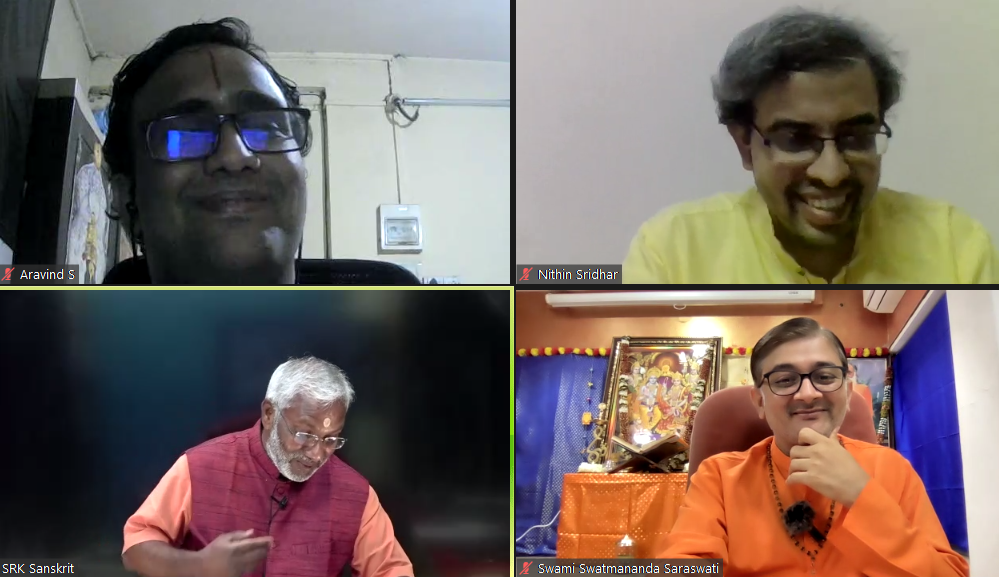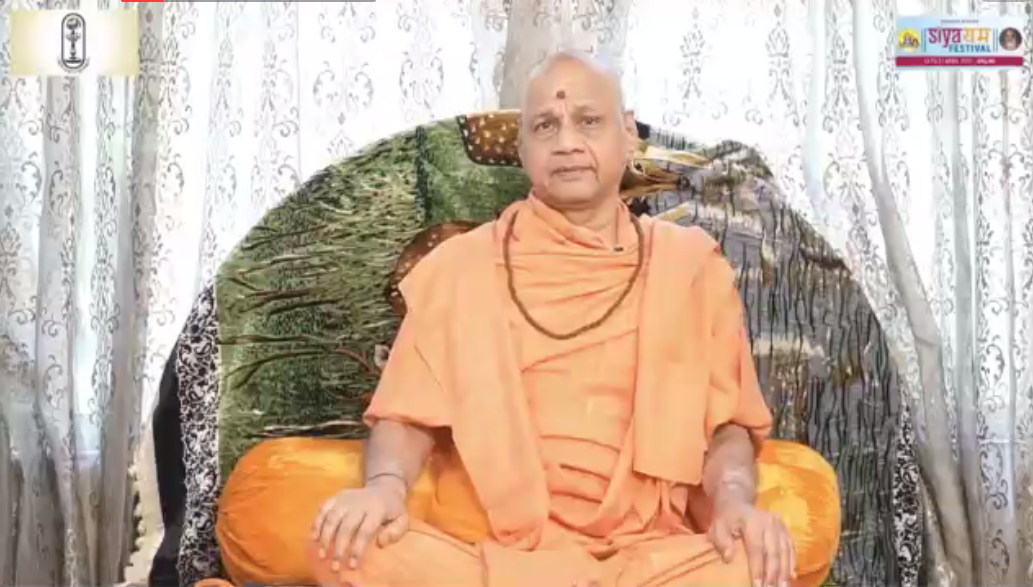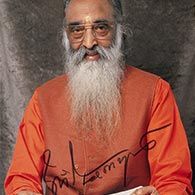DAY 2 - 14th April
Session 1
Ram Naam Mahima
by Swami Govind Dev Giriji

Swami Govind Dev Giriji is the founder of Dharmashree, Maharshi Ved Vyas Pratishthan and treasurer of Ram Janmabhoomi Teerth Kshetra. He has conducted satsang across the globe on Srimad Bhagawad, Ramayana, Mahabharat etc. for many years. Swamiji began by paying tribute to Swami Chinmayananda, whom he had had the good fortune to interact with, while serving in the Vishwa Hindu Parishad.
The essence of the four Veda-s is found in Mahabharat; in its Shanti Parva, Yudhishtira asked Bhishma about man’s ultimate duty; to which the answer was - Chant Vishnu Sahasranama. In today’s world, due to lack of time or knowledge of Samskrit, this may be difficult. Hence, his advice is to chant Rama’s name, as much as possible. In Rama Raksha Stotram, it is said that repeating Ram Naam is equal to chanting Sahasranama.
Rama word is so potent that Gauranga Mahaprabhu also advises us to chant Rama’s name. Sant Dhnyaneshwar says that Ram Naam is the boat that ferries us across the turbulent ocean of samsaara. In Srimad Bhagwatham, Ajamila’s story shows us the benefit of chanting the Lord’s name, intentionally or otherwise. Valmiki, who could not even say the word Rama, was uplifted by chanting ‘mara-mara-mara’. The greatest saints have taken the support of Naama Japa. Ram Naam Mahima is such that by repeating this simple name daily with love and faith, one’s material desires get fulfilled. A seeker who chants Ram Naam with yagna spirit, following all the necessary rules, gets uplifted and comes to know the Self. Pranaam to Swami Govind Devji, for his wonderfully uplifting satsang.
Report by
Jalaja Venugopal
Chinmaya Prakash Zone
--------------------------------------------------------------------------------------------------------
DAY 2 - 14th April
Session 2
Controversial Decisions of Sri Ram
by Swami Ramakrishnananda
& Sri Nitin Sridhar
moderated by Dr. Aravind Raghavan

Swami Ramakrishnananda is a renowned Sanskrit and Vedantic teacher who has authored Sanskrit courses and takes regular classes on Hindu scriptures. His humorous style of teaching and his use of interesting props while explaining Vedantic concepts ensures a fun way of learning. Sri Nitin Sridhar is on the board of advisors of the Advaita Academy and the consulting editor of Indic Today magazine.
Sri Rama is loved as an avatar, the ideal king and the very embodiment of Dharma. But there are questions about some of the decisions He took. The controversial decisions on which both speakers threw light were as follows:
1. Rama asked Sita to go through agni-pariksha, after Ravana was killed. He told Sita that she was then free to go wherever she wished.
Swamiji made it clear that Rama did not ask Sita to go through agni-pariksha. In fact, His instruction to Sita through Vibhishana was to bathe and come dressed as a queen. It was Sita who asked Lakshmana to light the fire, to prove her purity. Slokas from Valmiki Ramayana were quoted by Swamiji, to explain the unfolding of various events. Nitinji explained the dual roles Sri Rama had to play, as a loving husband and an heir of the Ikshvaku dynasty.
2. Rama became an ally of Sugriva, not Vali, although the latter was more powerful.
* Sugriva approached Rama for His friendship and not Vali.
* Vali had committed the same crime as Ravana, by forcefully abducting Sugriva’s wife. Hence, he deserved to be punished. For Sri Rama, the means and the goal were equally important, in upkeeping Dharma.
3. Rama killed Vali, hiding behind a tree.
* Sri Rama, as a representative of Bharata who was ruling at that time, had the authority to punish the person in his kingdom for breaking laws. Vali, by abducting wife of Sugriva, was liable for such punishment.
* If Vali is considered a vaanara, then as an animal, he can be killed by a Kshatriya in whichever way, even by hiding behind the tree.
4. Rama killed Shambuka.
Sri Rama as a king, was responsible for maintaining the varna vyavastha in society. Shambuka was on the wrong path and received punishment, as his purpose for austerity was to become the king of heaven and was developing asurik tendencies.
Swamiji quoted Valmiki Ramayana, while Nitinji explained Rama’s decisions from the standpoint of a king, a statesman, from a political and an economic point of view. One should read the original scriptures, without preconceived notions of right and wrong. One should read it as a statement of human conditions, dilemmas, emotions and complicated social and political realities of that time.
Report by
C. S. Manohar
Chinmaya Jayam Zone


